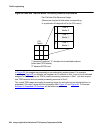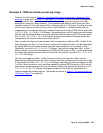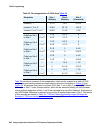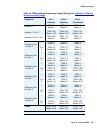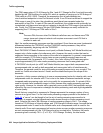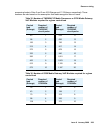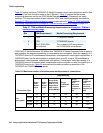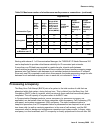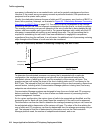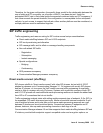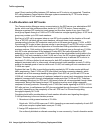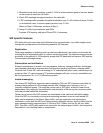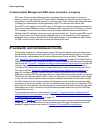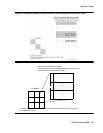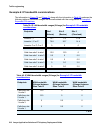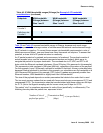
Traffic engineering
212 Avaya Application Solutions IP Telephony Deployment Guide
occupancy is allocated on an as-needed basis, such as for periodic maintenance functions.
However, if the overall server occupancy exceeds a particular threshold, SM operations are
postponed until a quieter traffic period.
Usually, the relationship between the sum of static and CP occupancy, as a function of BHCC, is
linear, with a positive y-intercept, as illustrated in Figure 69:
Relationship Between Processing
Occupancy and BHCC Rate on page 212. The slope of the line corresponds to the average
processing cost per call, and the intercept corresponds to the idle (that is, no-load) occupancy.
The average processing cost per call depends on the mix of calls that is being handled by the
system, and how complex each type of call is. For general business calls, nearly all of the CP
occupancy is associated with setting up and tearing down calls. The call processing that is
required for maintaining the call once it has been established is negligible in comparison,
regardless of how long the call lasts. In a call center, the additional cost of processing vectoring
steps throughout the lifetime of a call must also be considered.
Figure 69: Relationship Between Processing Occupancy and BHCC Rate
To determine the anticipated processor occupancy that is associated with a particular
configuration, the average processing cost per call must be determined based on the
anticipated volume of each type of call, and the complexity of the various call types. This
average cost per call implies the slope of the line in relating static and CP occupancy to the
BHCC rate. The intercept of that line, which corresponds to the no-load occupancy, depends on
several factors, including which Communication Manager platform is being used, how many
endpoints are administered, and so on.
Communication Manager systems are designed to keep the sum of static and CP occupancy
below a particular threshold. This is done to allow a suitable amount of processing time for
system management functions.
So for a given configuration, the various types of calls to be supported are identified, and the
processing cost for each call type (based upon the complexity of the call) must be assessed.
That information can then be used to determine the average processing cost per call, based on
the anticipated relative frequencies of the various call types. The slope of the line relating the
sum of static and CP occupancy can then be determined from the average processing cost per
call. The intercept of that line is determined by information such as the Communication
Manager platform used, the number of endpoints administered, and so on.
Processing Occupanc
y
(CP + Static)
BHCC Rate
Idle (No-Load)
Occupancy



